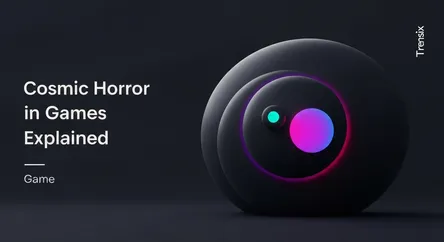Game
Cosmic Horror in Games Explained

Explore cosmic horror, a genre where games confront players with vast, unknowable entities and existential dread. Learn why this unsettling lore is popular.
What is it?
Cosmic horror, often called Lovecraftian horror, is a subgenre centered on humanity's insignificance in a vast, uncaring universe. Its terror stems from incomprehensible, ancient entities and forbidden knowledge that can shatter one's sanity. In games like Bloodborne and Amnesia, the lore focuses on surviving encounters with forces so immense they defy logic. The core fear isn't of death, but of understanding your own irrelevance. The true horror lies in the unknown and the unknowable, creating a deep sense of dread rather than simple scares.
Why is it trending?
This genre is trending in gaming because it offers deep psychological narratives. Indie developers have embraced its themes, with titles like Dredge and SIGNALIS gaining massive popularity. Modern technology now better represents the mind-bending visuals and unsettling atmospheres crucial to the genre. Players are drawn to complex stories that challenge them intellectually and emotionally. Cosmic horror provides mysterious lore that fuels community discussion and theory-crafting long after the game is finished, keeping players engaged in its cryptic worlds.
How does it affect people?
Cosmic horror impacts players by cultivating a slow-burning existential dread. It leaves a lasting feeling of unease, making players question their power and place in the game's universe. The lore often emphasizes helplessness against cosmic forces, turning gameplay into an exploration of fear and madness. By challenging a player's perception of control, it creates a unique psychological tension that is more memorable than a jump scare. This makes victories feel desperate and hard-won, leaving a profoundly unsettling impression.